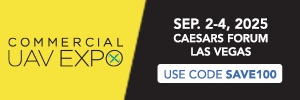Hi all,
I am a NQE qualified CAA PFAW authorised drone pilot based in the UK.
I have filming job (normal camera not aerial camera) coming up in Miami, USA and there is a small UAS filming requirement in the brief.
Here are some other elements in the equation:
Thanks in advance!
A-SCOTT85
I am a NQE qualified CAA PFAW authorised drone pilot based in the UK.
I have filming job (normal camera not aerial camera) coming up in Miami, USA and there is a small UAS filming requirement in the brief.
Here are some other elements in the equation:
- Technically i'm not "working" in the USA because the company is not based there
- The shoot is on private property
Thanks in advance!
A-SCOTT85



